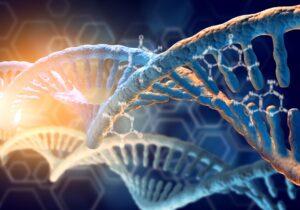The Power of Amino Acids in the Magnificent Egg
by Vanita Dahia
A chicken egg is considered to be a nearly perfect amino acid food.
Amino acids are central to virtually every function of the human body. The pool of amino acids is highly dynamic, changing moment by moment by shifting the flow of metabolic pathways in response to multiple physiological signals.
Amino acids are fundamental to health. Without amino acids, we cannot synthesize neurotransmitters, move a muscle or detoxify the liver.
“People crave laughter as if it were an essential amino acid”
Patch Adams
The egg contains higher lecithin content and other nutrients which does not raise blood cholesterol levels contrary to previous reports. To consider cholesterol content only is misleading because the ratio of cholesterol to other nutrients is important. Recent studies have shown that high intake of sugar and junk foods raises blood sugar and cholesterol levels despite its low cholesterol content.
Most foods contain a few essential amino acids which are called limiting amino acids for that food. The protein will be utilized by the body only to the extent that the limiting amino acid is present. The eggs wonderful balance of amino acids makes its proteins more usable than most other sources.
Steak or red meats are often considered great sources of amino acids which tends to raise amino acids lysine, valine, threonine and leucine to very high levels.
Amino acid base formulas derived from the amino acid content of an egg and suggests ways to achieve a more balanced amino acid level. At present the egg is probably the best amino acid food source.
Amino Acids in the Magnificent Egg
Eggs are a great source of protein, and that protein is made up of a variety of amino acids. There are 20 different amino acids in total, and eggs contain 18 of them.
- Essential amino acids: These are the nine amino acids that your body can’t make on its own, so you need to get them from your diet. Eggs contain all nine essential amino acids in good amounts: histidine, isoleucine, leucine, lysine, methionine, phenylalanine, threonine, tryptophan, and valine
- Nonessential amino acids: These are the 11 amino acids that your body can make on its own. Eggs also contain all 11 of these amino acids, although in lower amounts than the essential amino acids
Nutrients and Amino Acid Interactions
Tyrosine and phenylalanine can inhibit one another’s passage into the brain.
Taurine and glycine have the same function and compete for absorption.
Glutamic acid and aspartic acid have the same function and compete for absorption, but have a function opposite to that of taurine and glycine. Thus glutamic acid can promote absorption of glycine and taurine, and glycine can promote absorption of glutamic acid.
Some amino acids interact with drugs. Tyrosine metabolism is inhibited by tranquilizer, haloperidol and hypertensive, methyl L-dopa.
Vitamins and amino acids
Amino acids require vitamin cofactors for its metabolism with transaminase enzymes. Vitamins required for transamination of amino acids include vitamin B6, riboflavin, B2, niacin.
Amino acids are best absorbed if they are taken in L-isomer forms or tri-peptides. However in the case of methionine and phenylalanine, the DL form may be more beneficial.
Amino Acid Therapy
Biochemical individuality demands selective use of amino acid supplements personalised based on a patients amino acid analysis. The study of amino acids is making a significant contribution to the understanding of diseases.
For example, during an infection, plasma phenylalanine levels increase significantly.
Respect for amino acid harmonies is the foundation of good health!
The knowledge of nutrition is the most helpful thing in the field of medicine because of the constant need for food during health as well as illness.
Composition of Amino Acids in the Chicken egg (%)
Alanine. …………………..5.7
Arginine ………………….5.9
Aspartic acid. ……….. 9.2
Glutamic ……………… 15.7
Glycine ………………….. 3.2
Histidine ……………….. 2.4
Isoleucine ……………….7.1
Leucine ………………….. 9.9
Lysine ………………………6.4
Methionine …………….5.4
Phenylalanine ………..7.5
Proline …………………….3.8
Serine* …………………… 8.5
Threonine ……………….4.0
Tyrosine ………………… 3.7
Valine. ……………………. 8.8
Why Test Amino Acid Levels?
Factors like poor digestion function, improper use of medications such as antacids or acid blockers, increased stress responses, poor eating habits, and aging can affect the body’s ability to provide essential nutrients at a tissue level. As a result, adequate protein intake does not ensure an optimal amino acid supply within your body. Ensuring a balanced and optimal intake of these nutrients becomes critical for prevention as well as treatment of many chronic illnesses.
Testing for energy and mitochondrial function reveals all the options in testing for energy. An in-depth understanding of amino acids can provide essential clues to changes in the body’s physiology.
Reference
Amino acid composition of egg proteins, J.C Lewis et al, http://www.jbc.org/content/186/1/23.full.pdf




